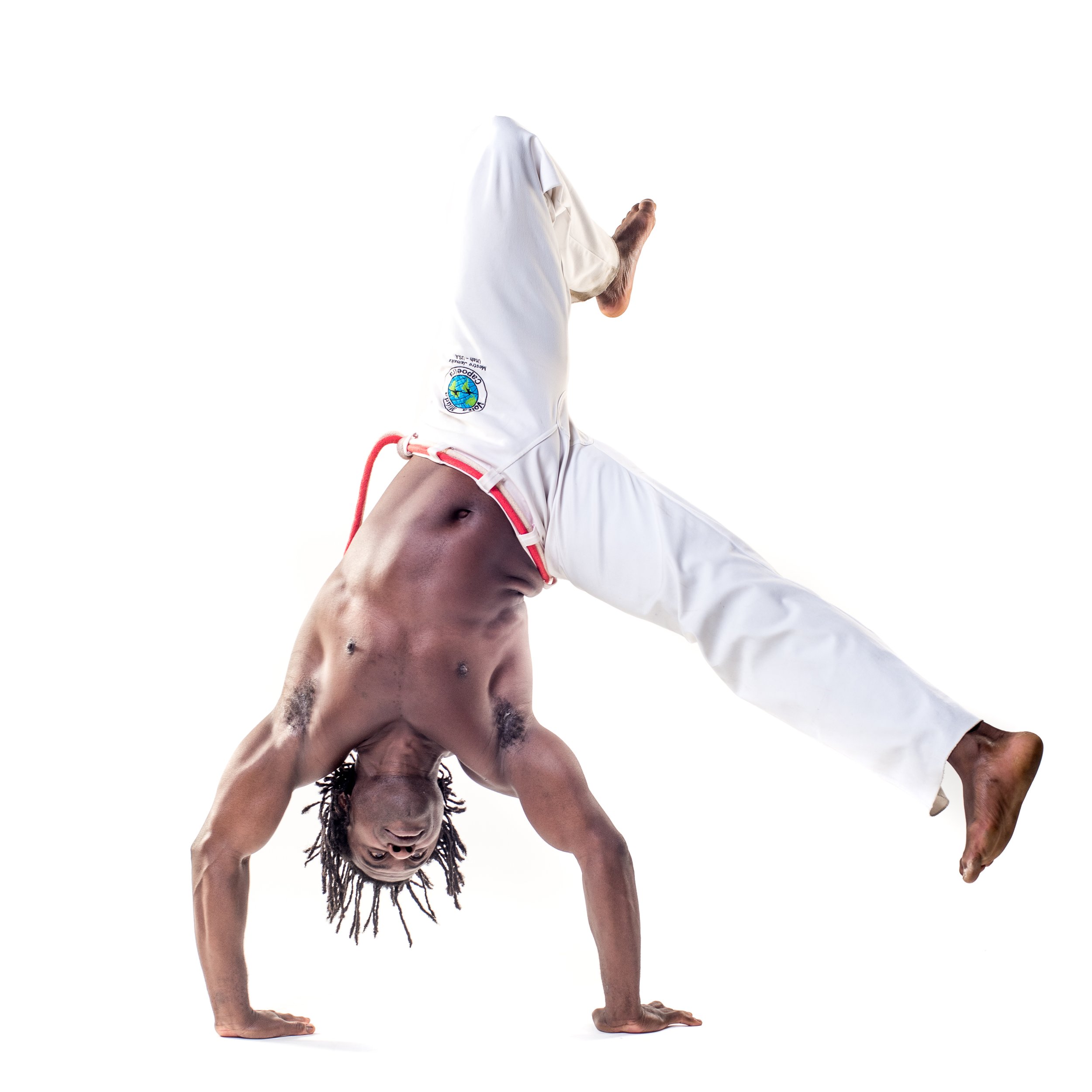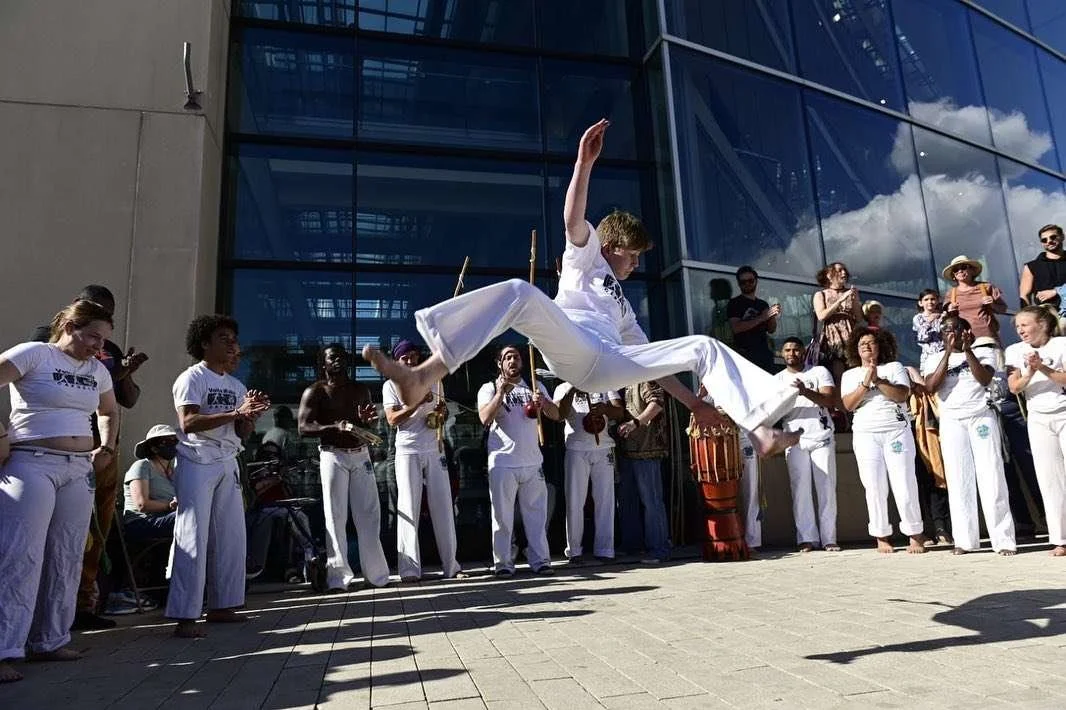Mestre Jamaika had a chance to spend a week in the beautiful Wasatch mountains through the Alta Community Enrichment (ACE) Artist in Residence Program which “provides an artist the opportunity to reflect, relax, and create in the inspiring mountains of Alta, Utah.”
He shares, “I’m not a skier, extreme hiker, climber, or mountain biker, but I feel at home when I have the chance to be in nature. I like to walk in Utah’s mountains and meditate and escape the stresses of everyday life. The combination of the inspiring and calming experience of being at Alta with pursuing some of my artistic goals was an incredible opportunity.”
Rest
Tell us a little about your experience at Alta.
“I have spent quite a bit of time on my own on the tropical coast of Brazil where I’m from, but I haven’t spent very much time alone in nature in the US, and this was a really special experience. I think my first-ever solo hike was during my residency. I spent some time on the trails every day and at first, I was a little nervous, but the friendly vibes and conversations with other hikers, and the welcoming landscape helped me feel comfortable.”
“This feeling is healing.”
In what ways were you able to rest?
“I started practicing capoeira nearly 40 years ago, and when I was younger, I did a lot of acrobatics. This use of my body all of these years has taken a toll, and I deal with chronic pain. I still practice capoeira almost every day, and it’s the way I make money to live. I was grateful for the opportunity to spend time physically resting and stretching. I also spent time studying a book called The Way Out by Alan Gordon. Within the last year, a Little Cottonwood Canyon advocate named Mary Young introduced me to a method of pain management called Pain Reprocessing Therapy. I practiced this reprocessing and really noticed an improvement in my physical pain.”
Were you also able to rest mentally during your residency?
“That was the best part. On my hikes, I’d stop in places with a beautiful view or next to a stream and spend hours playing my berimbau and exploring movement inspired by my surroundings. The combination of being in that environment and practicing my art form was transformational and felt healing. On one of my hikes, I was experiencing those healing vibrations, and passed a hiker and said, ‘This feeling is healing!’ and they laughed and said it back.
I’ve lived in Utah for about 25 years but only started spending time in the mountains for the past few years. Like a lot of people, I started to explore more of my ‘backyard’ during the pandemic. I’m someone who has worked with people my whole life and given energy to that. In return, I receive a lot of positive energy from others. But sometimes the energy exchange can be a lot.
I have discovered that when I’m in nature, I feel its healing, generous energy, and I felt it every day during my week at Alta. When I first started tuning in to this feeling a few years ago, I had the realization that nature is the only place that gives and doesn’t expect something of me in return. The weight of others’ expectations of me can sometimes feel heavy or unbalanced . . . with students, family here and in Brazil, and the community I left behind in my homeland. As a leader of my capoeira community in Salt Lake and as someone who comes from an area where family members and friends need a lot of financial help and other types of support, the weight of all that can be overwhelming. Through some especially hard times, I found a lot of solace in nature.
But I was wrong about my first ‘realization’ that nature gives and expects nothing in return. It needs us to take care of her too.”
Reflection
How did you use the time during your residency in reflection?
“Capoeira is an art form that was forged over centuries by enslaved Africans in Brazil—my ancestors. It’s an art of resistance and of overcoming. I spent time learning about and reflecting on an issue we’re experiencing in Utah, and another one that my people in my area of Brazil are facing. I remember the first time I flew to Salt Lake City in 1999. I saw the Great Salt Lake and I thought, ‘I didn’t know Utah had an ocean.’ And 25 years later, that ‘ocean’ is in crisis. The small village in Brazil where my family comes from is also in crisis and some of the reasons and impacts are similar to what we are experiencing in Utah. I reflected on how I can bring these issues forward in my artistic work.”
Can you share about the crisis your Volta Miúda Quilombo community in Brazil is facing?
“My community in Brazil is experiencing a water crisis that is similar to Utah’s in some ways. My parents were born in quilombos [communities originating from settlements of Afro-Brazilians who were enslaved] where capoeira came from. My grandparents were farmers, and as a young child I often walked with my grandma to get water from our river. Over the years, our land has been stolen and exploited by a billion-dollar paper pulp industry that uses destructive monoculture farming practices, polluting and exhausting our essential water sources. The river I used to walk to as a child has dried up. We also need policies and regulations to change, to center human, animal, and plant life over profit. My cousin is the leader of the village where I’m from, and he has worked hard for decades to gain our land rights back and help heal the area. And we need more help.”
From the National Farmer’s Union of Canada (regarding the video above): “Hear from a Quilombola community leader in the Atlantic Forest biozone of Brazil who is fighting to grow food for their families and communities in direct resistance to the expansion of destructive eucalyptus tree plantations controlled by the major pulp company Suzano. Quilombola communities are fighting for legal recognition of their lands as Suzano continues to encroach on local farms and traditional community lands. Célio Pinheiro Leocádio is a Quilombola, born in the Quilombo of Volta Miúda, in Bahia state and President of the Association of Remaining Quilombola Producers of Volta Miúda.”
The crisis in Mestre Jamaika's village in Brazil, shown above, is affecting their water supply.
Can you tell us a little more about your learnings about Great Salt Lake?
“I spent some time during my residency learning more about what’s happening with lake and ways we can help. I watched a lot of videos from local organizations doing this work. Earlier this year, I applied for a project grant with the Salt Lake Arts Council called Wake the Great Salt Lake. I wasn’t awarded the grant, but the process led me on a path of learning and raising awareness. I’m looking forward to seeing what the awarded artists and arts organizations share through this important project.”
From the Salt Lake Arts Council: Wake the Great Salt Lake is a temporary public art project that aims to educate and inspire residents and visitors to understand and prevent the further decline of the Great Salt Lake. Without action, the collapse of the Great Salt Lake would have major implications for the ecology and economy of the city, state, and region. The project is supported by the Salt Lake City Arts Council, the Salt Lake City Mayor’s Office, and Bloomberg Philanthropies Public Art Challenge.
“My sister-in-law, Keely Song, is a dance professor at BYU and has created dance projects working with Ben Abbott, another BYU professor who studies ecology and has been one of the most impactful scientists to bring awareness to the crisis at Great Salt Lake. It’s been awesome seeing her work to raise awareness through art. I think this recent video by Dr. Abbott for the Wake the Great Salt Lake project gives a really good summary of what’s happening and how we can help. The notes under the video were some of my biggest take-aways.”
Notes from the Wake the Great Salt Lake Video
What’s happening?
Great Salt Lake is facing collapse within 5 years, even with the large amount of water we got in 2023 and 2024.
Why does it matter?
Great Salt Lake has great spiritual significance to Utah’s Indigenous tribes.
The lake is supporting national industry and our global food supply—more than most of us realize.
We see a pattern of absolute cultural, economic, and ecological devastation when other saline lakes have been lost like what happened with the Aral Sea. Clusters of diseases also emerge caused by pollution from the lakebed.
We have to save the lake or else whole cities and whole regions will to be abandoned.
Why is it under collapse?
The crisis is caused by the overuse of water (but not by our growing population) and exacerbated by climate change.
It’s from human use of water: 80% is agricultural (2/3 going to alfalfa and hay to feed livestock), 10% mineral extraction, and 10% cities.
What can we do?
We need artists, community leaders, and political leaders across the spectrum to be working on this so we create an awakening of our values and a change in our vision. We need a broadening of the love that we have for our home . . . and with that, good policy will be inevitable.
We need to understand water and conserve water.
We need to figure out how farmers can use less water to water their crops and provide ways to compensate them for their conservation efforts.
Creation
During Mestre Jamaika’s residency, he spent his time exploring capoeira movement inspired by the natural surroundings of mountains, waterfalls, and streams. He connected with some University of Utah film students and scouted a few locations for a possible film project to help bring awareness at the crisis at Great Salt Lake. He also spent time connecting and coordinating with his cousin, Celio, for some future events showcasing capoeira and bringing awareness to the crisis at his home village. His cousin is applying for a visa to visit the US this fall, in hopes of making connections in the US to help their efforts in Brazil.
Can you tell us more about what you were able to work toward during your residency?
“I’m excited about conversations and ideas that were sparked during my time at Alta, and I look forward to seeing how it will all unfold. Capoeira is an art form that was developed and cultivated outside in nature, and I think it’s a perfect way to help bring awareness to these issues.
I also really enjoyed teaching a capoeira class for the ACE program, and I hope to keep coming back to share capoeira with the ACE community in the future.”
“Capoeira’s movements reflect water, which engages with and relies on its surroundings in fluid action and reaction.”
Is there anything else you’d like to share?
“I’d just like to thank the ACE program, Sara Gibbs, Megan Oliver for their work and for this beautiful opportunity as well as Cameron at the Goldminer’s Daughter Lodge.”











